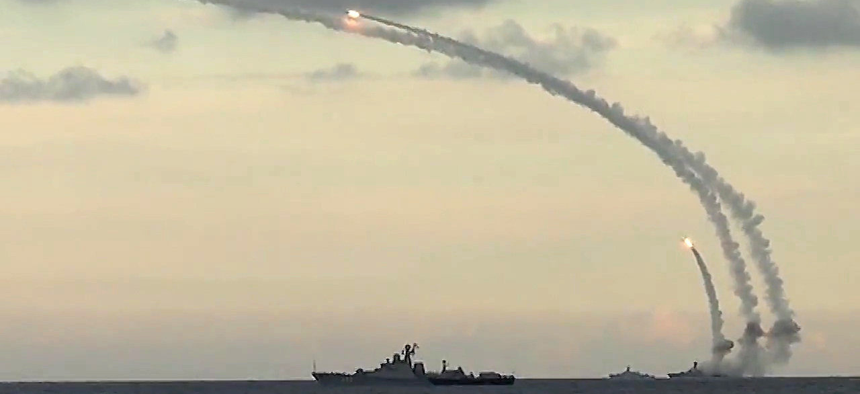Un estudio realizado por el CSIS (Center for Strategic and International Studies) concluye que “….EUA no estaría preparado adecuadamente para enfrentar el tipo de misiles de crucero, que Rusia está empleando masivamente en sus ataques durante la invasión a Ucrania”. Expresa además “…que los comandantes militares y líderes políticos, han ignorado la necesidad de protección dentro del territorio de ese país, para neutralizar este tipo de misiles de vuelo bajo y gran capacidad de maniobra. En lugar de ello, se han invertido millones de US$ en grandes sistemas interceptores de ICBM y lanzadores móviles, para apoyar a las tropas en otros escenarios de conflicto”. Los autores del informe, recomiendan como primer paso para abordar esta creciente amenaza, vincular los radares terrestres, las aeronaves de vigilancia, los UAS de vuelo a gran altura, así como los interceptores de misiles.
The United States is not prepared to defend itself from the types of cruise missiles Russia has increasingly used to attack Ukraine, warns a new assessment from a prominent Washington think tank.
The report from the nonpartisan Center for Strategic and International Studies argues that military commanders and policymakers have ignored the protection of the continental United States from these low-flying, maneuverable weapons. Instead, they’ve poured billions of dollars into siloed interceptors that protect the homeland from higher-flying missiles and into mobile systems to defend forces deployed in other regions of the world.
“The near-complete lack of homeland cruise missile defense and related forms of air defense more broadly has created a deterrence problem,” the report states.
The report’s authors recommend linking existing ground radars, surveillance planes, high-flying drones, and missile interceptors as a first step in addressing the increasing threat.
“A lesson from the war in Ukraine is that weapons and sensors of the past can have effective uses even in the face of a high-end adversary,” the report states. “Rather than scrapping or mothballing older systems, integrating data feeds and shooters into a new homeland defense architecture can strengthen the overall defense.”
Lawmakers and military commanders have become increasingly concerned in recent years about a cruise missile attack on the United States. Unlike intercontinental ballistic missiles, which fly along high, predictable trajectories, cruise missiles fly low so that radars are unable to detect their presence. The weapons could be launched discreetly from submarines lurking just offshore.
“Within an increasingly broad and diverse air and missile threat spectrum, the ubiquitous land-attack cruise missile lies at its center,” the report states. “Emerging hypersonic missile threats garner significant attention, but garden-variety cruise missiles represent one of the most underappreciated, high-capacity, and near-term threats to the U.S. homeland.”
Pentagon officials began sounding the alarm about the cruise missile threat to the United States over the past decade, but there has been little movement in bolstering defenses. The Army began using an aerostat north of Baltimore to track planes along the east coast, but those efforts were abandoned after the blimp broke free of its mooring in 2015. The heavy cable knocked down power lines before the blimp came to rest in Pennsylvania.
In 2019, the Trump administration’s Missile Defense Review pointed to the rising cruise-missile threat, however, the Pentagon has yet to put anyone in charge of buying defenses, despite being ordered by Congress to do so in 2017, the report states. That means the nation has had to rely on a patchwork of radars, interceptors, and fighter jets.
In recent months, Congress has approved more than $273 million to develop long-range radars, mount cruise-missile defense experiments, and start to build defenses on Guam, the U.S. territory in the Pacific Ocean that is home to Air Force and Navy bases that are critical to military operations in the region.
Fuente: https://www.defenseone.com


